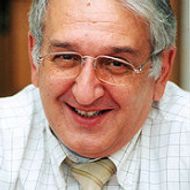- A
- A
- A
- ABC
- ABC
- ABC
- А
- А
- А
- А
- А
- HSE University
- Faculty of Economic Sciences
- Department of Mathematics
- News
- Alexander Yarkin Presented the Report on 'The Great Divergence Revisited: Industrialization, Inequality and Political Conflict in The Unified Growth Model'
-
The Department
109028, Moscow, Pokrovsky Boulevard 11, T423
Phone: +7 (495) 621 13 42,
+ 7(495) 772 95 90 *27200; *27212.
Email: dhm-econ@hse.ru; shatskaya@hse.ru

 New Centrality Measures in Networks: How to Take into Account the Parameters of the Nodes and Group Influence of Nodes to Nodes
New Centrality Measures in Networks: How to Take into Account the Parameters of the Nodes and Group Influence of Nodes to Nodes
Aleskerov F. T., Shvydun S., Meshcheryakova N.
CRC Press, 2022.
Belenky A., Fedin G., Kornhauser A.
International Journal of Public Administration. 2021. Vol. 44. No. 13. P. 1076-1089.
In bk.: AIP Conference Proceedings. Vol. 2328: ICMM-2020. AIP Publishing LLC, 2021. Ch. 060001. P. 060001-1-060001-4.
Zlotnik A., Kireeva O.
math. arXiv. Cornell University, 2020. No. arXiv:2011.14104v2[math.NA].
109028, Moscow, Pokrovsky Boulevard 11, T423
Phone: +7 (495) 621 13 42,
+ 7(495) 772 95 90 *27200; *27212.
Email: dhm-econ@hse.ru; shatskaya@hse.ru


Alexander Yarkin Presented the Report on 'The Great Divergence Revisited: Industrialization, Inequality and Political Conflict in The Unified Growth Model'
This paper studies the impact of inequality in capital and land distribution on the pace of industrialization, thereby explaining the role of wealth inequality in the Great Divergence phenomenon. We build a two-sector unified growth model, in which the outcome of public policy contest between the supporters and opponents of modern sector development determines the pace of industrialization. The distribution of wealth affects the incentives of agents to invest in political conflict, and hence influences the probability of pro-growth policies. We show that while higher inequality in land distribution hampers modern sector development, higher inequality in capital within landless agents is growth enhancing. The strength of the latter effect increases with the amount of accumulated capital. The model also captures the hump-shaped path of conflict intensity observed throughout the industrialization phase. We present several historical narratives that support these results.
- About
- About
- Key Figures & Facts
- Sustainability at HSE University
- Faculties & Departments
- International Partnerships
- Faculty & Staff
- HSE Buildings
- Public Enquiries
- Studies
- Admissions
- Programme Catalogue
- Undergraduate
- Graduate
- Exchange Programmes
- Summer Schools
- Semester in Moscow
- Business Internship
-
https://elearning.hse.ru/en/mooc/
Massive Open Online Courses
-
https://www.hse.ru/en/visual/
HSE Site for the Visually Impaired
-
http://5top100.com/
Russian Academic Excellence Project 5-100
- © HSE University 1993–2025 Contacts Copyright Privacy Policy Site Map
- Edit

